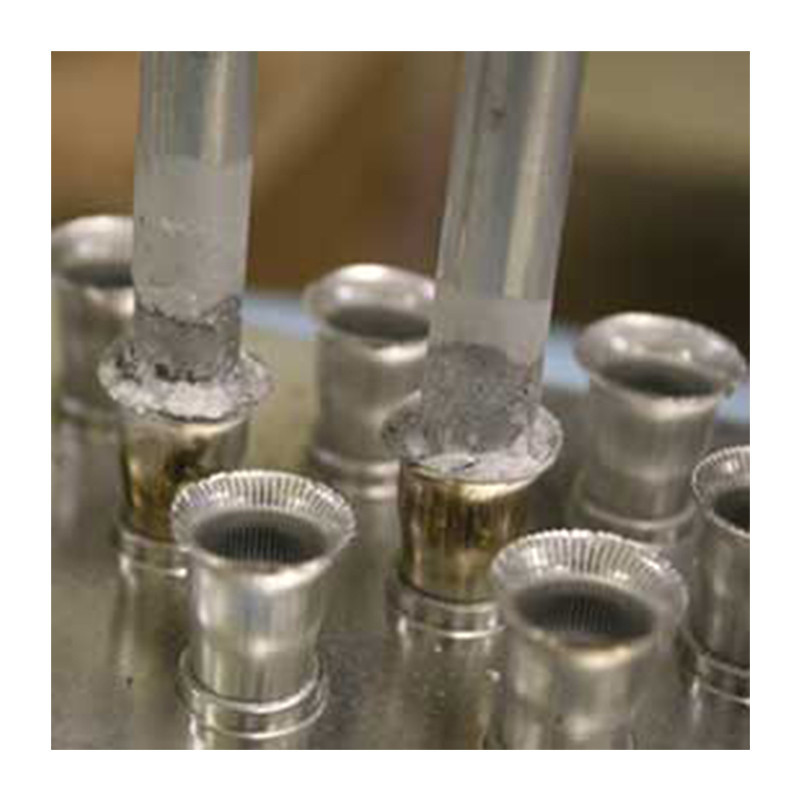

Debes estar logueado
Category


Las fotos son solo para fines informativos. Ver especificaciones de producto
please use latin characters
La soldadura fuerte es un proceso de unión de elementos metálicos mediante aleaciones de aporte con un punto de fusión superior a 427 °C, pero inferior al de las piezas que se van a unir. Esta técnica permite unir metales similares y diferentes.
Las uniones soldadas:
El tipo de aleación utilizada en el proceso de soldadura fuerte depende de las piezas a unir. Las más comunes son las aleaciones de cobre-fósforo, plata, aluminio, cobre, níquel y cobalto.
La moderna tecnología de calentamiento por inducción proporciona un calentamiento fiable, sin contacto y eficiente energéticamente en un tiempo mínimo sin uso de llama. El tiempo de un ciclo de calentamiento por inducción es mucho más corto en comparación con la soldadura con llama, por lo que se pueden procesar más piezas en el mismo período, con menor liberación de calor al entorno. La soldadura por inducción permite controlar el tiempo, la temperatura, la sujeción y la posición de las piezas, lo que hace que el proceso sea repetible y garantice un resultado final uniforme.
Los sistemas de semiconductores pueden calentar áreas muy pequeñas dentro de tolerancias precisas del proceso de producción sin alterar las propiedades metalúrgicas. Para grandes volúmenes o procesos que requieren alta calidad, las piezas pueden soldarse por inducción en atmósfera inerte sin fundente ni costosos procesos de limpieza, reduciendo así la oxidación.
¿Estás interesado en este producto? ¿Necesita información adicional o precios individuales?
Usted debe estar conectado
La soldadura fuerte es un proceso de unión de elementos metálicos mediante aleaciones de aporte con un punto de fusión superior a 427 °C, pero inferior al de las piezas que se van a unir. Esta técnica permite unir metales similares y diferentes.
Las uniones soldadas:
El tipo de aleación utilizada en el proceso de soldadura fuerte depende de las piezas a unir. Las más comunes son las aleaciones de cobre-fósforo, plata, aluminio, cobre, níquel y cobalto.
La moderna tecnología de calentamiento por inducción proporciona un calentamiento fiable, sin contacto y eficiente energéticamente en un tiempo mínimo sin uso de llama. El tiempo de un ciclo de calentamiento por inducción es mucho más corto en comparación con la soldadura con llama, por lo que se pueden procesar más piezas en el mismo período, con menor liberación de calor al entorno. La soldadura por inducción permite controlar el tiempo, la temperatura, la sujeción y la posición de las piezas, lo que hace que el proceso sea repetible y garantice un resultado final uniforme.
Los sistemas de semiconductores pueden calentar áreas muy pequeñas dentro de tolerancias precisas del proceso de producción sin alterar las propiedades metalúrgicas. Para grandes volúmenes o procesos que requieren alta calidad, las piezas pueden soldarse por inducción en atmósfera inerte sin fundente ni costosos procesos de limpieza, reduciendo así la oxidación.
Su agradecimiento a la reseña no pudo ser enviado
Reportar comentario
Reporte enviado
Su reporte no pudo ser enviado
Escriba su propia reseña
Reseña enviada
Su reseña no pudo ser enviada
